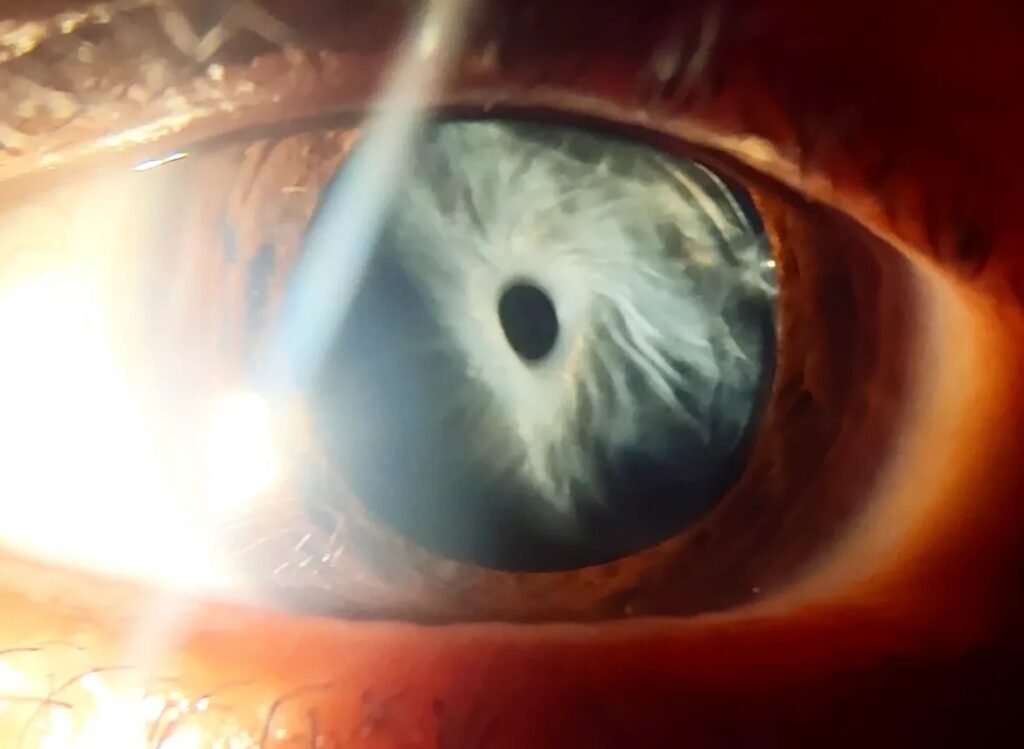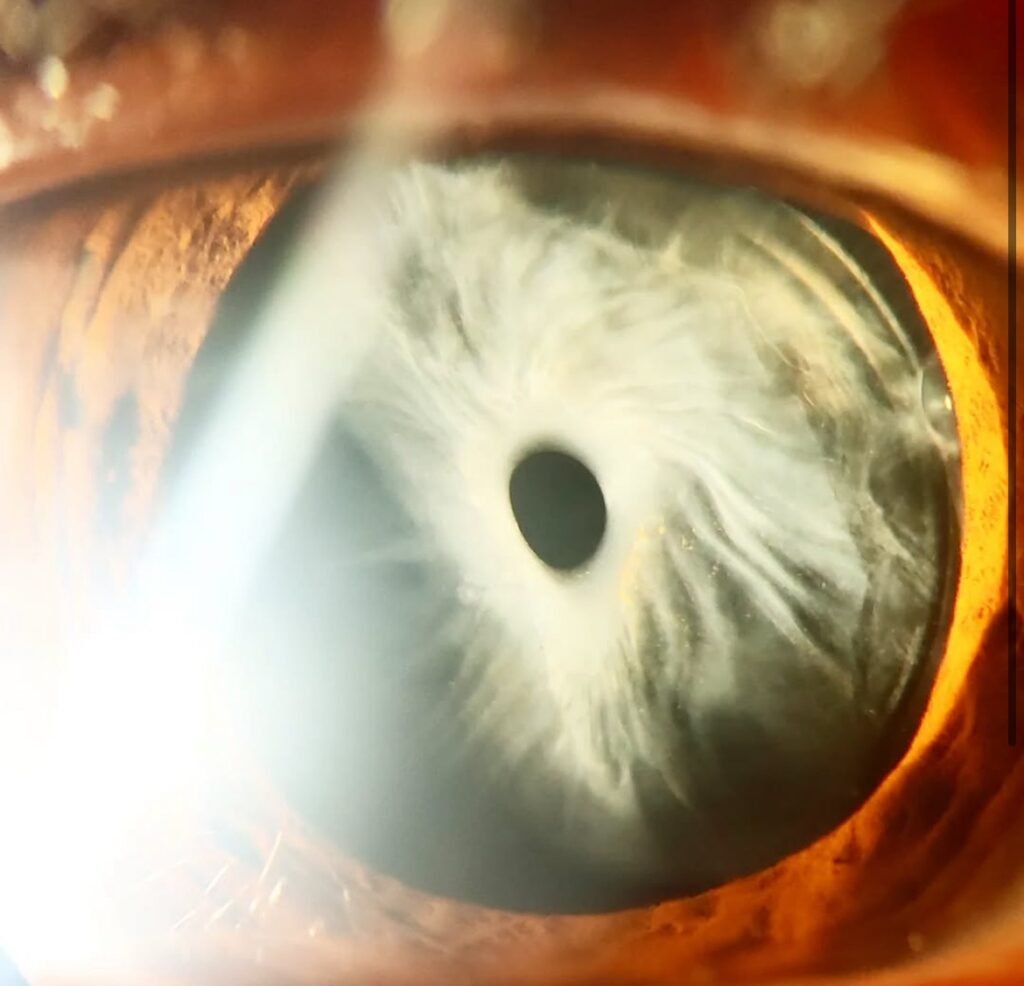Anterior Capsular Phimosis After Cataract Surgery
Anterior capsular phimosis—also known as the anterior capsule contraction syndrome—is a postoperative condition characterized by progressive centripetal shrinkage of the anterior capsulorhexis following cataract surgery. If the contraction becomes excessive, it can obstruct the visual axis, alter the effective lens position, and in severe cases, threaten intraocular lens (IOL) stability by exerting stress on the zonules.
This condition most commonly manifests weeks to months after phacoemulsification and remains clinically significant because it can reduce visual quality and increase the risk of postoperative complications.



Pathophysiology
The primary mechanism behind anterior capsular phimosis is the proliferation and fibrotic transformation of lens epithelial cells (LECs) left behind on the anterior capsule after cataract extraction.
These residual LECs may undergo epithelial-to-mesenchymal transition, transforming into contractile myofibroblast-like cells. Their circumferential contraction causes the capsulorhexis edge to shrink inward.
The risk and speed of contraction increase with:
higher inflammatory load increased cellular activity zonular weakness biomechanical laxity of the capsular bag
When the forces of contraction outweigh capsular support, clinically significant phimosis develops.
Risk Factors
1. Surgical Factors
Small capsulorhexis (<5.0 mm) – Strongest modifiable risk factor. Small openings close more easily with LEC contraction. Hydrophilic acrylic IOLs – Associated with increased capsular fibrosis. Inadequate removal of LECs Zonular weakness from any cause
2. Ocular and Systemic Conditions
Pseudoexfoliation syndrome – High risk due to zonular laxity and increased fibrotic activity. Uveitis – Chronic inflammation accelerates LEC proliferation. Diabetes mellitus – Associated with stronger fibrotic capsular response. High myopia – Weaker capsule and zonules. Ocular trauma Younger age group – More active lens epithelial cells and increased capsular elasticity.
These patients require more vigilant postoperative follow-up.
Clinical Presentation
Patients may present with:
Progressive capsulorhexis shrinkage Obscuration of the visual axis Monocular glare or decreased quality of vision IOL decentration or tilt in advanced cases Reduced anterior chamber depth in extreme contraction Increased zonular stress or phacodonesis
Slit-lamp examination typically reveals a sharply demarcated, inward-pulling fibrotic ring of the anterior capsule.
Management
1. Early Nd:YAG Anterior Capsulotomy
The standard treatment is Nd:YAG laser relaxing incisions in the anterior capsule.
This is most effective when performed early, before severe fibrosis develops.
Benefits include:
restoring capsulorhexis size preventing visual axis occlusion reducing zonular traction preventing IOL decentration
2. Surgical Management in Severe Cases
If dense fibrosis prevents effective YAG treatment or contraction causes IOL displacement, surgical options include:
Manual anterior capsular relaxing incisions Removal of fibrotic capsule IOL repositioning or exchange CTR insertion if not previously used
Conclusion
Anterior capsular phimosis remains an important postoperative concern following cataract surgery. Understanding its pathophysiology, recognizing high-risk groups, and applying preventive surgical techniques—especially adequate CCC size and selection of hydrophobic acrylic IOLs—can greatly reduce incidence.
Early detection and timely Nd:YAG capsulotomy preserve visual outcomes, prevent IOL complications, and maintain long-term capsular stability.
References
American Academy of Ophthalmology (AAO) – Cataract Surgery Complications https://www.aao.org/ EyeWiki – Anterior Capsule Contraction Syndrome https://eyewiki.org/Anterior_Capsular_Contraction_Syndrome Baile RB, Foster A, et al. Capsular contraction syndrome. Curr Opin Ophthalmol. Hayashi K, Hayashi H. Anterior capsule contraction and its clinical implications. Ophthalmology. Werner L. Anterior capsule opacification: clinical impact and pathophysiology. J Cataract Refract Surg. Nagamoto T, Hara T. Pathogenesis of anterior capsule contraction syndrome. J Cataract Refract Surg. Chang DF. Preventing capsular contraction in pseudoexfoliation. Cataract & Refractive Surgery Today.
Discover more from An Eye Care Blog
Subscribe to get the latest posts sent to your email.


You must be logged in to post a comment.